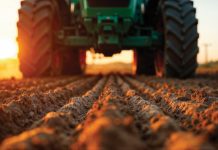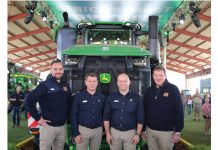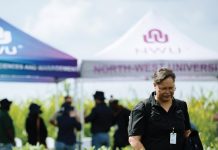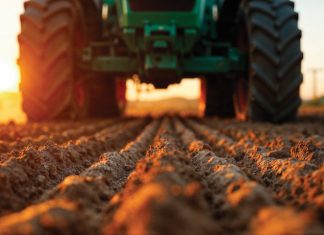Escalating input costs were at the centre of discussions at this year’s Grain SA Congress.
Dr Pieter Taljaard, CEO of Grain SA, hosted the first of two panel discussions on day one of Congress, during which technical aspects for input cost management were discussed.
Congress heard that variable costs increased by 50% year on year, leaving little margin for profit for South African producers. ‘Shrinking profit margins are forcing farmers to produce more to survive,’ said Dr Taljaard. ‘Going forward we need intelligent innovations. It is companies like these who partner with us, together with government, that must drive these new innovations,’ he added.
Joining him on stage were several leaders from the crop protection, agrochemical and seed environment.
Industry’s perspective
Frank Rothweiler, global corn strategy and portfolio lead for Bayer, spoke about South African producers’ receptiveness of technology. ‘South Africa is one of our top ten core markets when it comes to breeding new hybrids and producers here are keen to adopt new technology. This market is a high priority for Bayer.’ According to Rothweiler, innovations in the research and development pipeline included short-stature maize to enable optimal use of inputs while minimising harvest losses, as well as digital tools for precise input application.
Tony Esmeraldo, business director of Corteva Agriscience SA, and Steve Reno, president: Global Seed Business Platform at Corteva Agriscience, who joined the discussion via an internet link, referred to Corteva’s latest innovations. They discussed several new technologies that were pending registration and should be available commercially soon.
The issue of bottlenecks with regard to the registration of new technology was high on the agenda. Dipepeneneng Serage, chief director in the Department of Agriculture, Land Reform and Rural Development (DALRRD) stood in for his director-general, Mooketsa Ramasodi, to answer questions from the panel and the floor. He said that R6,5 million had been earmarked to fill vacancies at the Registrar: Act No. 36 of 1947. ‘We are in the process of appointing 16 extra evaluators to address the backlog.’ He further announced that the first module of an online registration system had been tested and should be up and running by December this year, streamlining the process. Apart from the vacancies, incomplete applications often hindered progress in the registration of new products under Act No. 36 of 1947, he added.
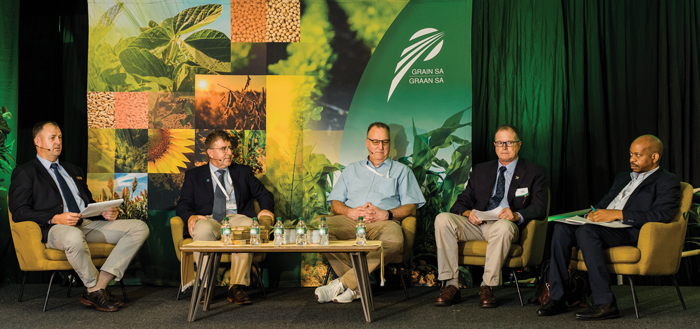
A producer’s perspective
Jozeph du Plessis, executive member of Grain SA, stated the case for South African producers during the panel discussion. He compared farming in South Africa to running on a treadmill, where each season the treadmill was set one click faster. ‘You have to keep up, otherwise you’ll fall off. This means we have to continuously improve yield and productivity, do more with less and be better than the season before, otherwise we won’t survive financially.’
‘I can assure you that it is very challenging to farm here. We have a difficult and unstable climate with periodic droughts alternated by flooding – all exacerbated by climate change. We have to contend with crumbling infrastructure such as road, rail, harbours and electricity supply that increases the cost and complicates doing business.’ He said producers had to deal with rampant levels of crime and the price-cost squeeze where production costs rose faster than the farmgate prices for produce. ‘There is presently no support from government for commercial farmers in South Africa – no safety net and no affordable comprehensive insurance scheme for agriculture. The risks are very high!’ he told Congress.
Despite the challenges, South Africa managed to be a net exporter of maize in eight of the past ten seasons, earning valuable foreign currency while selling maize at export parity, Du Plessis added. This has meant that in terms of the local market, South African maize was the cheapest in the world for many of these years. ‘This is a massive advantage to a population with huge unemployment and poverty – to have an abundance of staple food at the cheapest possible price.’
The good news according to Du Plessis was that South African producers were able to adapt and become much more efficient in the production of grain, primarily maize. ‘On our own farm the ten-year average maize yield increased from 1,8 t/ha in the ten-year period from 1981 to 1990, to 2,4 t/ha in the nineties. It further increased to 5,2 t/ha in the 2000s and it has been 5,9 t/ha on average for the past ten years.’ He attributed these increases in yield and productivity to the implementation of new technology in farming practices, more productive inputs, beter genetics, biotechnology and agrochemicals such as glyphosate.
In his closing statement, Du Plessis emphasised that these benefits had to be affordable and sustainable.
From the floor, Chris Schoonwinkel, one of the delegates, urged companies to sell chemicals directly to producers.



